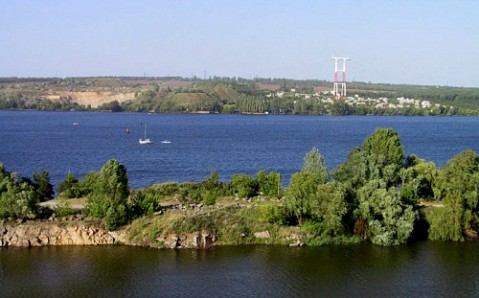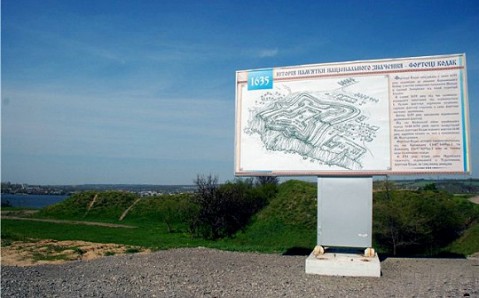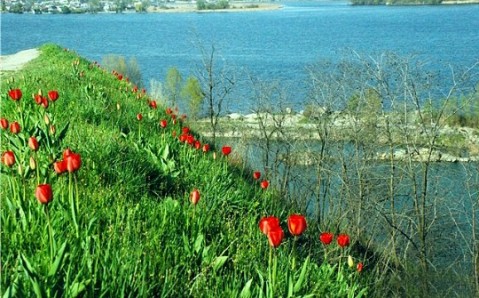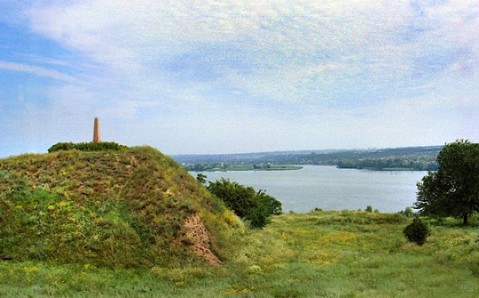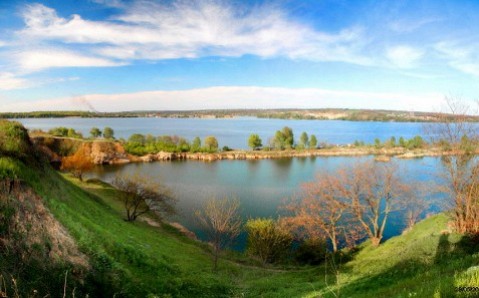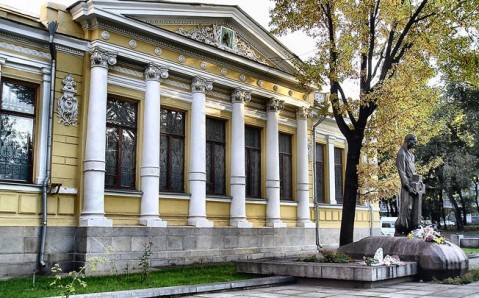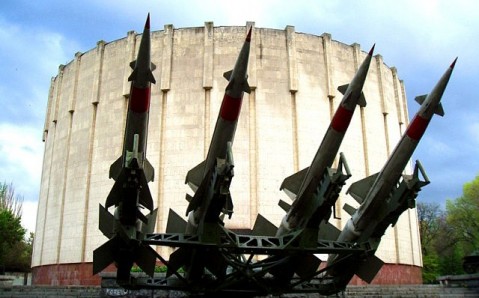Kodak Fortress Ruins
The Kodak Fortress is an ancient Polish citadel, whose remnants are situated in a picturesque place on the high bank of the Dnieper River, in the village Stari Kodaky near Dnipropetrovsk. Built on the order of the Polish King Wladislaw IV in order to control Zaporizhzhian Cossacks, it passed into history thanks to its short, but vivid and unconventional life.
Fortress’ construction started near the Kodak rapids, in 1635. It was designed by the well-known French engineer and fortifier, the author of several powerful fortification facilities in Europe. Half a year later, the massive citadel, fortified by bastions and surrounded by a deep dry ditch, was raised on a high rock. Both banks of the Dnieper River were disposed to the fire from the canons that were installed on defensive dirt walls, enclosed with wooden paling. Thanks to its convenient location, the fortress perfectly coped with its task: blocked the way, which Cossacks used in order to reach Turkey and Crimea, and prevented local peasants from running away to the settlements of free Cossacks.
However, despite its apparent impregnability, the Kodak Fortress turned out to be vulnerable: just a few months later, Cossacks managed to conquer it without too much struggle. They unearthed the ramparts, massacred the whole garrison, and took the guns to Zaporizhzhian Sich. Vexed by this prank, the Polish crown didn’t delay the response and sent its troops to the Dnieper lands. They suppressed the uprising, and publicly executed its leader in Warsaw.
Four years later, the fortress was restored, but after another project. This time it was designed by German engineer. New citadel was three times as big as the previous one and was protected by wide dirt wall with five-sided, jutting out bastions. Fort’s firepower was reinforced by artillery, and the number of mercenaries was tripled. Unlike the previous one, the new Kodak Fortress housed civilian constructions as well: houses of artisans, workers, merchants. An Orthodox Church, a Catholic monastery with a catholic church and a watchtower were built in the courtyard. At the same time, a settlement was founded near the fortress walls; later it turned into the village Stari Kodaky.
The peaceful period didn’t last long, though. In 1648, the Liberation War started in Ukraine and the fortress capitulated to three Cossack regiments almost without fight. Thus, it lost its defensive importance for the next six years. Then, the fortress served its direct purpose for a while: it was used during the civil and the Russian-Turkish wars. In 1711, according to the terms of the Treaty of the Pruth, signed by the Imperator Peter the Great, the Kodak Fortress was razed on par with other fortifications of the Ukrainian South.
The citadel was totally destroyed in 1944, when a granite quarry was created on its place. Only fragments of dirt walls survived until now. There is a lake that appeared as a result of quarry’s flooding near them. It is planned to restore the fortress in the future and to create a theme museum park on its territory. But for now, it's just an extraordinarily beautiful place with amazingly strong energy.
Getting here. The remnants of the Kodak Fortress can be reached by the route taxi №16 that departs from Dnipropetrovsk residential neighborhood ‘Topol-3’.

 Eastern
Eastern
